Rewilding seas: Some waters off England to get full protection
- Published
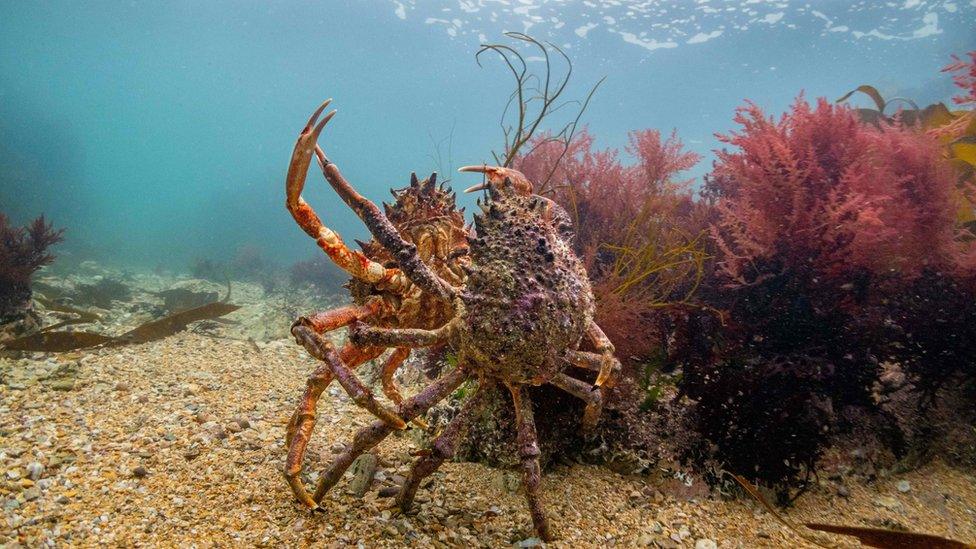
The seas off the UK are home to an array of wildlife
Three stretches of water off the English coast are to get the strictest possible environmental protections, as part of new measures to restore the health of the sea.
Fishing will be banned along with all activities that damage the sea bed, such as mining and laying cables.
Proposals to bring in Highly Protected Marine Areas (HPMAs) at two other sites have been dropped.
Critics say the plans lack ambition and progress is far too slow.
Prof Callum Roberts, of the University of Exeter, said the protected areas would make a big difference to the sea-life within them but covered only 0.5% of English seas.
"At this rate of progress it'll take 260 years to get to the level of protection that science says is needed - which is 30% of the seas highly protected," he said.
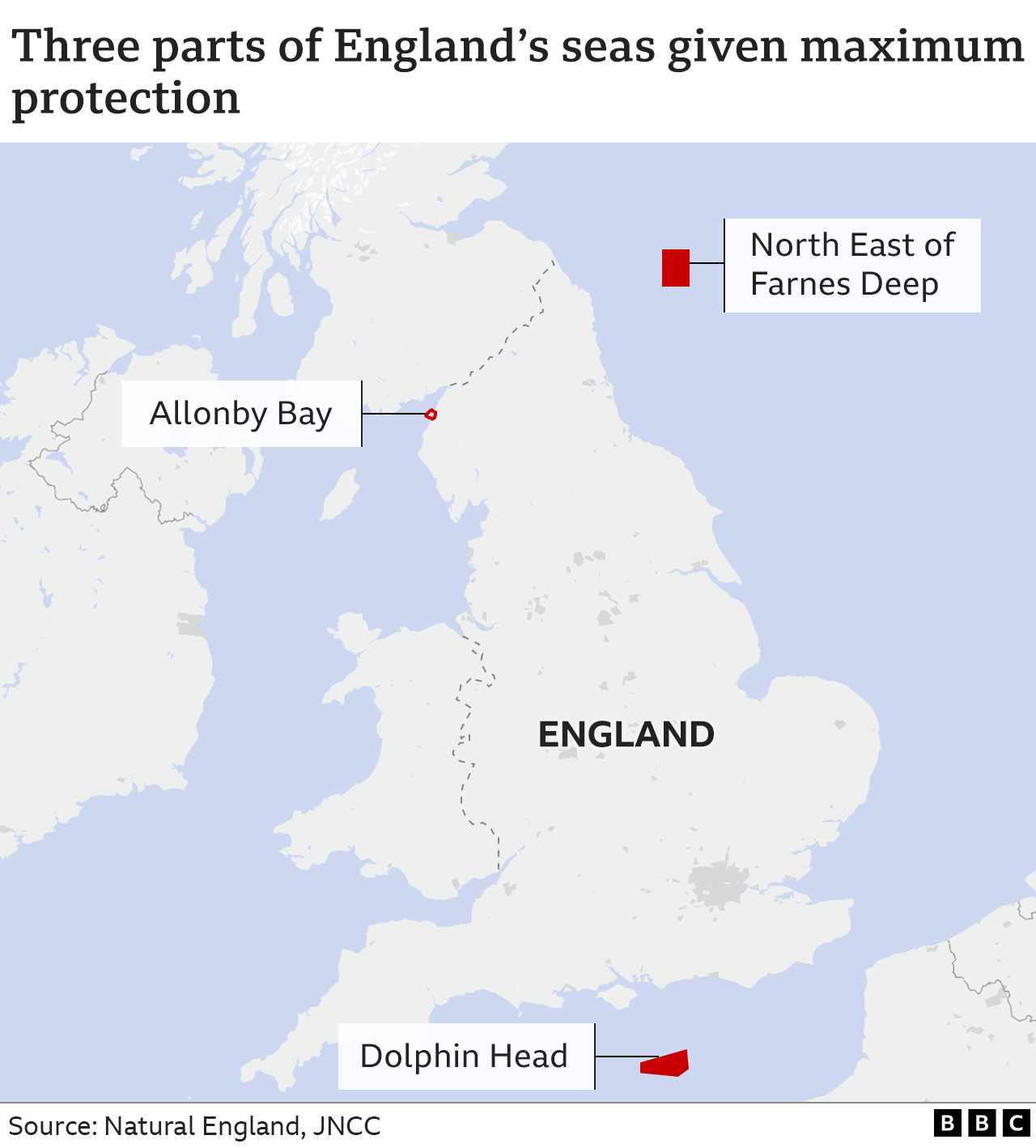
The Wildlife Trusts said they would be calling on the government to designate more fully protected marine areas as soon as possible.
"I'm totally dismayed that the government has only decided to designate three of the five proposed HPMAs," said head of marine conservation, Dr Lissa Batey,
"They're a good first step but we really need to do more if we're to turn the tide on nature's recovery and bring wildlife back."
Richard Hill, of the Marine Conservation Society, echoed her words: "It's a step forward, but a baby step," he said. "It's a shame the government isn't being a bit more ambitious in protecting our seas."
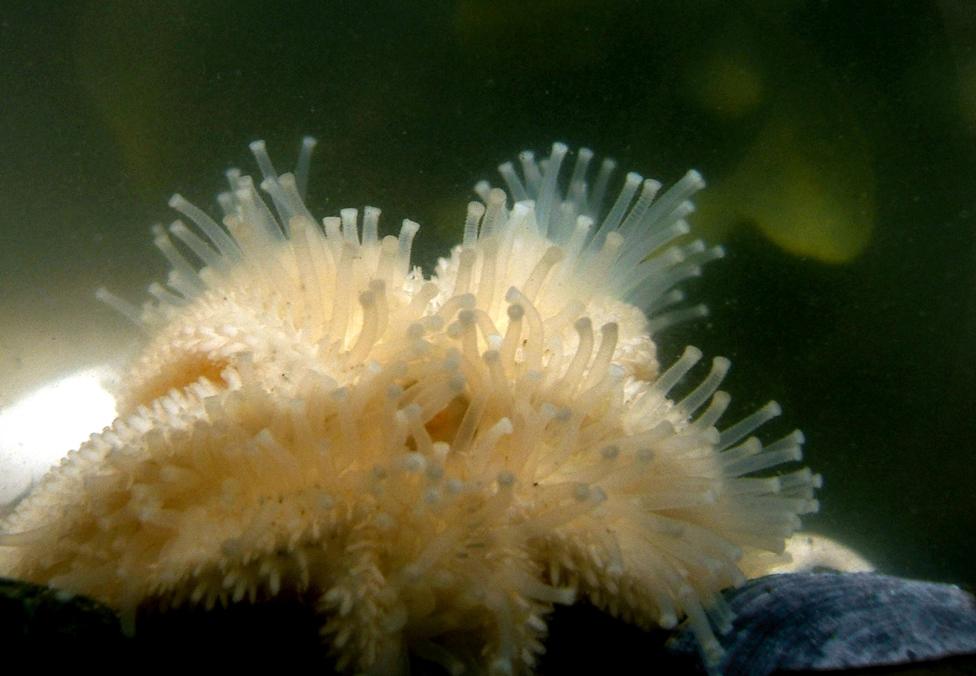
North East of Farnes Deep - in the North Sea - teems with starfish
The areas to be given full protection are:
Allonby Bay, in Cumbria: in-shore waters that harbour a wealth of marine life, including sponges, soft coral, seaweed, sea squirt, anemone and living reefs built by the honeycomb worm
Dolphin Head: a stretch of water far off the Sussex Coast that's home to dolphins, porpoises, sea-birds and fish
The North East of Farnes Deep, 35 miles (55km) off the coast of Northumberland: the seabed is rich in strange and rare life-forms including long-lived molluscs and squat lobsters. The waters teem with sea-birds and marine mammals, including the white-beaked dolphin.
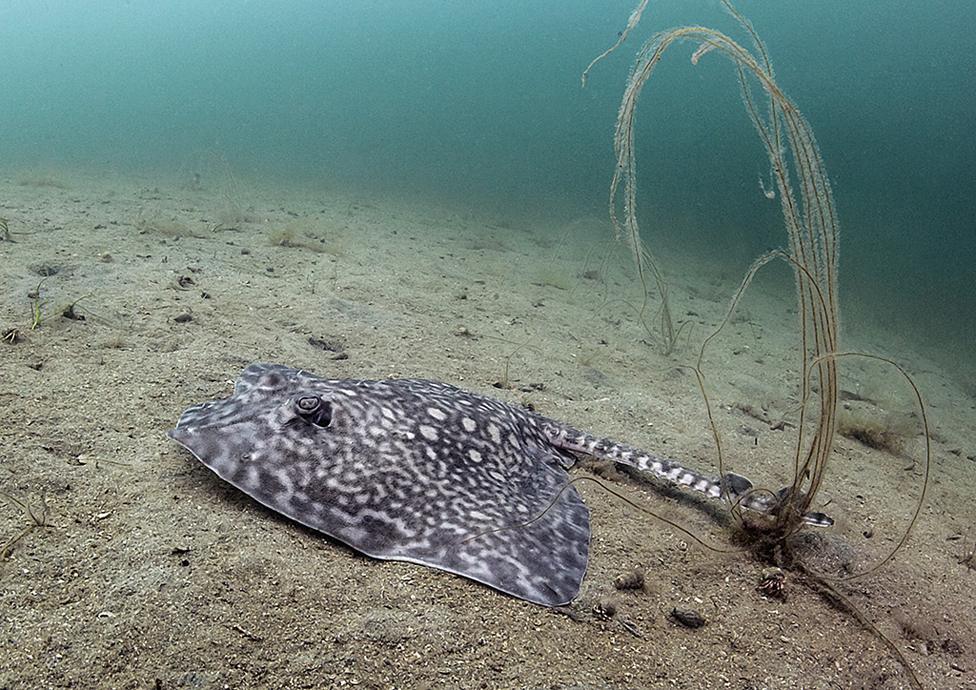
Allonby Bay is a spawning area for Thornback rays
Proposals at Northumberland's Holy Island were dropped after fears were voiced that a ban on fishing could devastate the local economy.
A similar plan for Trevelyan Inner Silver Pit South, 16 miles (26km) off the coast of Lincolnshire, was also ditched. The area is a fishing ground for cod, plaice, herring and sole.
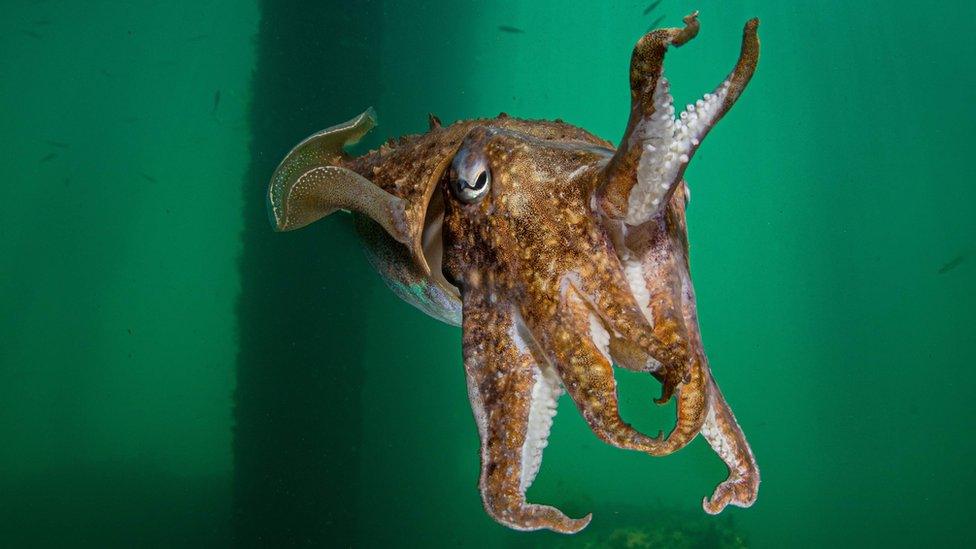
Cuttlefish swimming in the sea off Dorset
The new scheme gives three areas off England full protection against damage from fishing, mining and development - part of a target to protect 30% of marine waters by 2030.
A spokesman for the Department of Environment, Food and Rural Affairs said: "Highly Protected Marine Areas will offer the highest levels of protection in our seas, helping a wide range of marine habitats and species to fully recover."
In Scotland, ministers have committed to designating at least 10% of Scotland's seas as HPMAs by 2026.
Seas are under pressure following decades of over-exploitation, pollution and climate change. While 38% of seas around the British Isles are designated marine reserves, many are still subject to damaging fishing practices such as bottom-trawling, where fishing gear is dragged along the sea bed.
Follow Helen on Twitter @hbriggs.